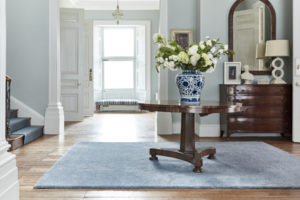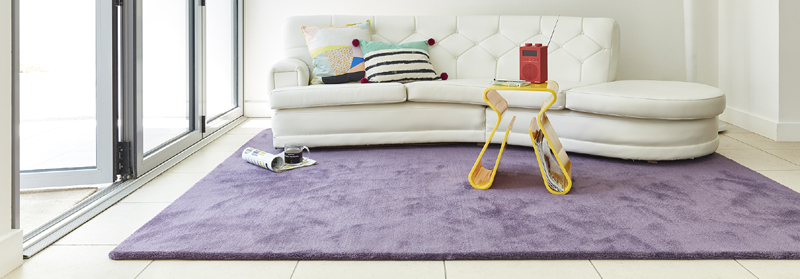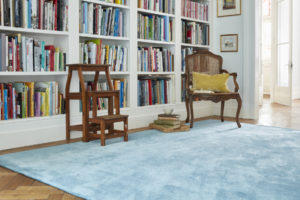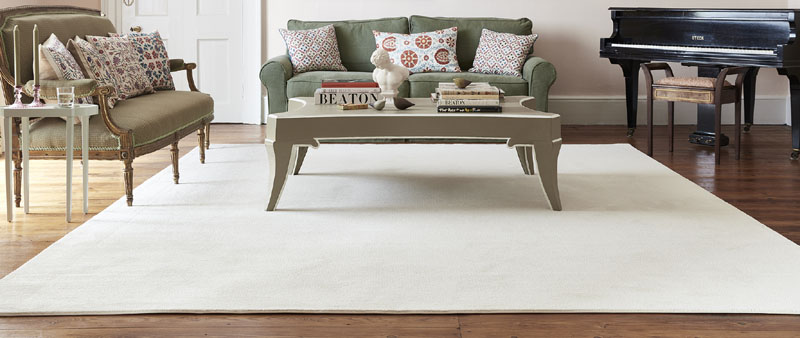Q&A: TRIEXTRA – GREEN CARPET, IN VARIOUS COLOURS
We don’t want much from a carpet: be hardwearing, stain resistant and environmentally friendly. But ticking all three boxes is a challenge. But now there’s a fibre called Triexta, and we asked Birger Karlsson, UK Sales & Marketing Director of Lano Carpets, to tell us more…
What is Triexta?
 It’s a relatively new type of fibre that’s similar to polyester (they share the same chemical root) but Triexta has superior green credentials and also offers numerous practical advantages. You may also hear it referred to as PTT fibre, or Sorona, which is the brand name given to it by its manufacturer, DuPont. Carpets made with Sorona Triexta are also marketed as SmartStrand.
It’s a relatively new type of fibre that’s similar to polyester (they share the same chemical root) but Triexta has superior green credentials and also offers numerous practical advantages. You may also hear it referred to as PTT fibre, or Sorona, which is the brand name given to it by its manufacturer, DuPont. Carpets made with Sorona Triexta are also marketed as SmartStrand.
Rather than being 100 per cent petroleum-based like polyester, Triexta is partly (up to 37 per cent) made from corn glucose, which is a renewable resource. In addition, the production of the Triexta polymer requires 30 percent less energy and emits 63 percent less greenhouse gas than creating an equal amount of nylon.
How eco-unfriendly are most other carpets?
Traditional carpet is usually full of chemicals used to treat it and prevent stains. Triexta carpet, on the other hand, needs no added chemicals because its fibres are hydrophobic, meaning they don’t absorb moisture, which gives it in-built stain protection (and also makes it incredibly soft). What’s more, because Triexta replaces petroleum with corn glucose, fewer chemicals are put into the fibre, which in turn means that fewer chemicals will be released in the form of VOCs (volatile organic compounds); these gases can affect indoor air quality and may cause symptoms ranging from eye, nose and throat discomfort to dizziness and headaches.

How is Triexta turned into a carpet?
The fibre is dyed with water-insoluble, eco-friendly dyestuffs; these are under the strict surveillance of the GuT, a European body set up to ensure environmental friendliness and consumer protection at every stage of the carpet’s life-cycle. The fibre is then made into yarn, which is in turn “tufted” – injected into the carpet backing cloth with needles.
What are the main benefits of choosing a Triexta carpet?

Aside from its eco benefits, the first is that Triexta is recognised as being more durable and resilient than conventional polyester.
In fact, it’s widely considered to be as hardwearing as nylon, which has long been considered the king of synthetic carpet fibres. SmartStrand carpets offer lifetime soil and stain resistance, and most spills can be cleaned with only water, eliminating the need for harsh chemicals. Triexta fibre is inheritably mould- and mildew-resistant and is quick to dry, making it a great carpet choice for those with allergies and asthma. Plus, it won’t fade or discolour in sunlight. They are also extremely soft, so underfoot comfort does not have to be compromised to enjoy such a complete carpet style.
What about at the end of its life?
Currently Triexta is not 100 per cent biodegradable. This is obviously not an ideal situation, and the carpet industry is currently setting up systems for the collection and recycling of used carpets.
Where can we find out more?
Visit the Lano website to see our wide range of SmartStrand carpets and find your nearest retailer.
If you want to see just how resilient this amazing carpet can be, visit YouTube and search for “SmartStrand Zoo Challenge” and “SmartStrand Tough Mudder”.


